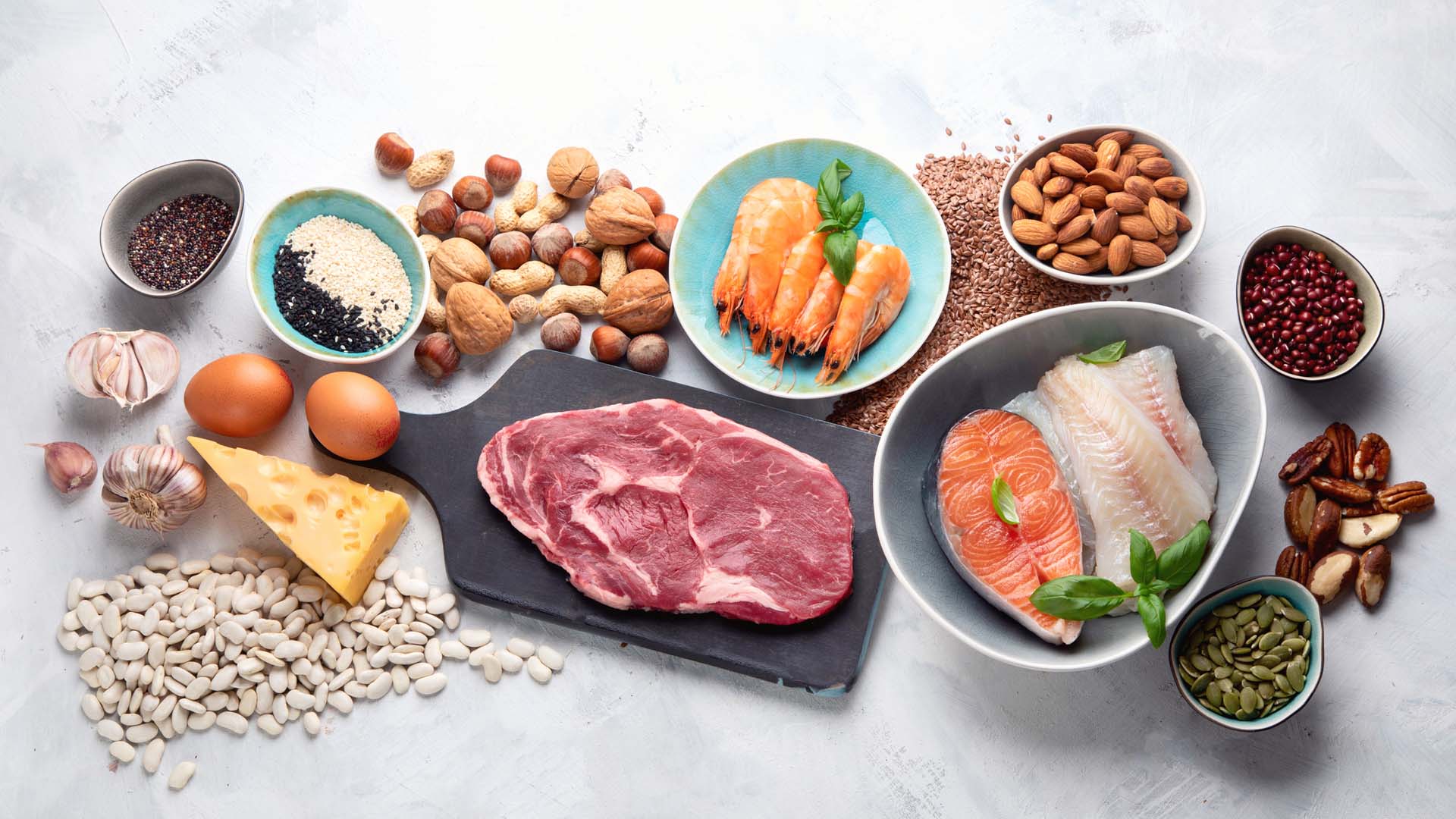11 phosphorus rich foods and why we need this essential mineral
Enjoy these phosphorus rich foods for stronger bones, muscles and heart health

Phosphorus is an essential mineral with an impressive range of functions, so eating a range of phosphorus rich foods is incredibly important for overall health.
“It’s found in your body and has an important role in the formation of strong bones and teeth,” says registered dietitian Dr Melissa Prest, a National Spokesperson for the Academy of Nutrition and Dietetics.
Phosphorus rich foods include dairy, poultry, legumes, nuts, seeds and red meat. You can also take it in supplement form.
But why bother? Phosphorus is a key element of cell membranes and it helps to activate enzymes, keeping blood pH within a normal range. This is one of the most important physiological functions of homeostasis (the body’s steady state). We need healthy blood pH levels to maintain our respiratory and circulatory systems, as they work together to ensure nutrients and oxygen-rich blood reach our cells.
Why do we need phosphorus?
Phosphorus is the building block of our genes, making up DNA, RNA (a nucleic acid present in all living cells that has structural similarities to DNA) and ATP (the body’s major source of energy). It is also needed to help balance and use other vitamins and minerals including vitamin D, zinc, iodine and magnesium.
“Phosphorus is an important mineral involved in metabolism, building bones and teeth, regulating your heart rhythm, helping with muscle contractions and allowing your nerves to send signals,” Dr Prest tells Live Science.

Dr Melissa Prest is a registered dietitian from Chicago. She works at the National Kidney Foundation of Illinois where she provides medical nutritional therapy for clients with kidney disease and other chronic diseases. Dr Prest is a board-certified specialist in renal nutrition, a member of The Academy of Nutrition and Dietetics’ Renal Dietitians dietetic practice group.
The kidneys, bones and intestines work hard to regulate phosphorus levels in the body. If too little or too much is absorbed, several things happen to preserve stores and maintain equilibrium: the kidneys excrete less phosphorus in urine, the digestive tract gets more efficient at absorbing it and the bones release their stores of phosphorus into the blood. The opposite process happens in these organs if the body has enough phosphorus stores.
Get the world’s most fascinating discoveries delivered straight to your inbox.
How much phosphorus do you need?
Many foods naturally contain phosphorus, known as ‘organic phosphorus’. The main sources are dairy, red meat, poultry, seafood, legumes and nuts.
‘Inorganic phosphorus’, on the other hand, is a processed form added to foods to preserve color, moisture and texture. It’s mainly in fast food, deli meat, sodas and other processed foods.
“The recommended amount for adults to consume in a day is 700 milligrams. We consume phosphorus naturally occurring in food, and foods that have phosphorus added to them,” says Dr Prest.
“Phosphorus additives enhance flavors, allow for shelf-stability and can make foods creamier and easier to melt,” says Dr Prest. “But we don’t absorb 100% of the phosphorus naturally found in foods; we typically absorb anywhere from 30 to 60%, with plant sources being the least absorbed and animal sources being the best.
“However, we absorb 90 to 100% of phosphorus when it is in additive form. Consuming too much phosphorus may be a concern for people with certain health conditions such as chronic kidney disease, so it is best to meet our phosphorus needs by eating phosphorus rich foods.”
The best phosphorus rich foods
Want to know some of the best phosphorus rich foods? Dr Prest reveals 11 sources of this essential mineral, and how you can incorporate it into your diet.

Cottage cheese
This has 358 mg of phosphorus (49% of recommended daily intake) in a 1 cup serving.
Cottage cheese is great as a snack or protein option for the main meal.
Milk
This has 272 mg of phosphorus (38% of recommended daily intake) in 1 cup.
Enjoy a glass of milk with any meal or use in smoothies or sauces.
Eggs
These have 157 mg (22% of recommended daily intake) per two eggs.
Eggs are a great way to start your day and can be enjoyed with other meals, too. Go for an omelet or quiche for dinner.
Lentils
Cooked lentils have 264 mg of phosphorus (37% of recommended daily intake) in a 3/4 cup serving.
Lentils can be used in many recipes from soups and stews to pasta dishes. Aim for a few servings of lentils in a week.
Chickpea
This has 163 mg of phosphorus (23% of recommended daily intake) in 2.5 ounces.
Enjoy a palm-size portion of chicken with a main meal.
Yogurt
This has 247 mg of phosphorus (35% of recommended daily intake) in 3/4 of a cup.
Mix yogurt with oatmeal when making overnight oats or have yogurt as a snack with some fruit and a drizzle of honey.
Sunflower seeds
They have 343 mg of phosphorus (49% of recommended daily value) in 1/4 of a cup.
Try topping a salad with sunflower seed kernels for some added crunch.
Canned tuna
Canned tuna (in water) has 104 mg of phosphorus (14% of recommended daily intake) in a 2.5-ounce serving.
Canned tuna can be used in place of fresh tuna in most recipes so do not feel limited by tuna salad. Mix it with quinoa and green leaves in a salad, add to pasta or make tuna fishcakes.
Pork
This has 221 mg of phosphorus (31% of recommended daily intake) in a 2.5-ounce serving.
Choose leaner cuts of pork like tenderloin when eating with a main meal.
Beef
This red meat has 180 mg of phosphorus (25% of recommended daily intake) in a 2.5-ounce serving.
Use 90 percent lean ground beef in tacos or chillies.
Tofu
This has 204 mg of phosphorus (29% of recommended daily intake) in 3/4 of a cup.
There are different varieties of tofu. Use silken tofu in a smoothie or stir-fry using firm tofu.
This article is for informational purposes only and is not meant to offer medical advice.
- Read more: Eight grains that are gluten-free
- Read more: Vitamin E: Source, benefits & risks

Maddy Biddulph is a freelance health and fitness journalist with over 26 years of experience working for consumer media in the US and UK. As a Level 3 personal trainer and weight loss advisor she is used to trying out and reviewing the latest health and fitness products. At Maddy Biddulph Personal Training, she runs one-to-one and small group sessions, as well as group exercise classes. She specializes in mobility work with seniors and runs regular chair workouts in her hometown of Oxford.


